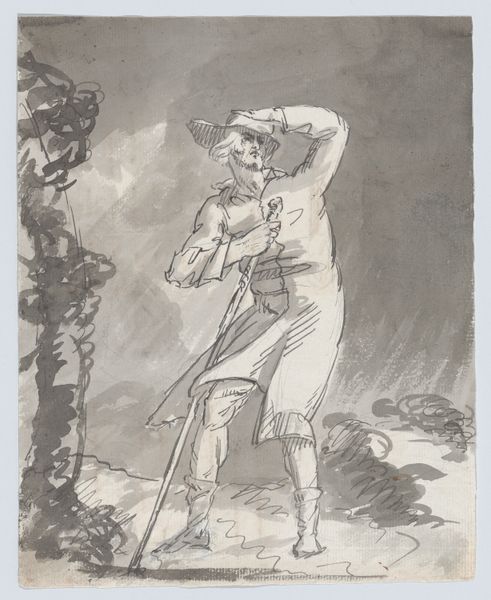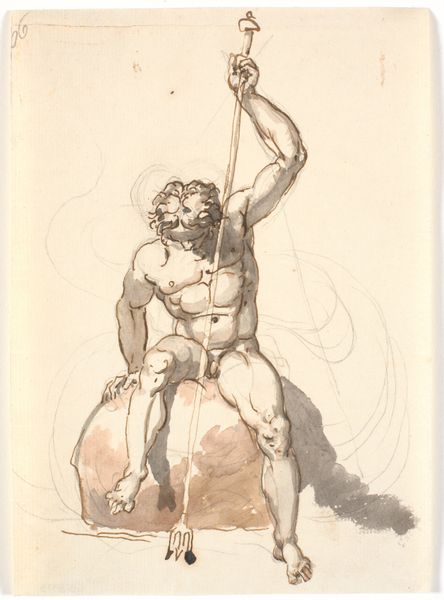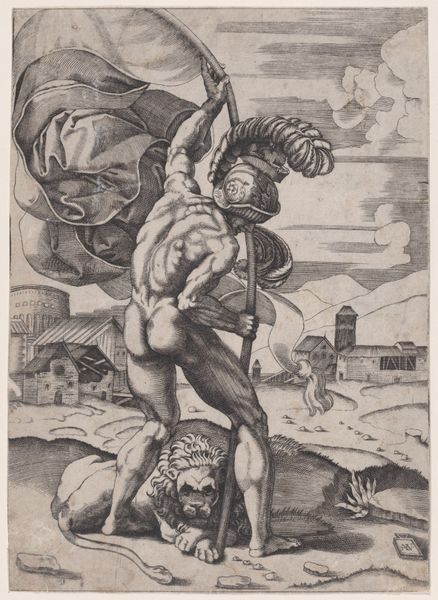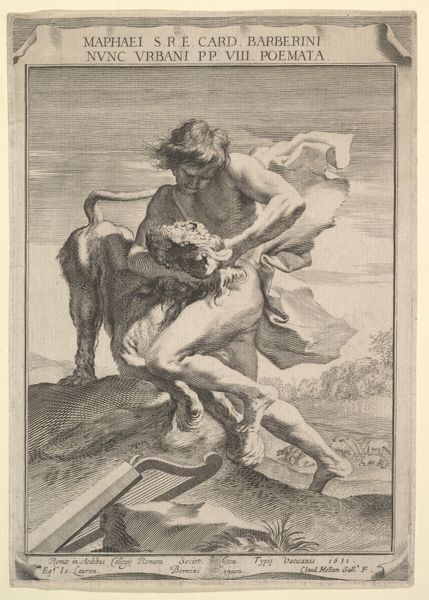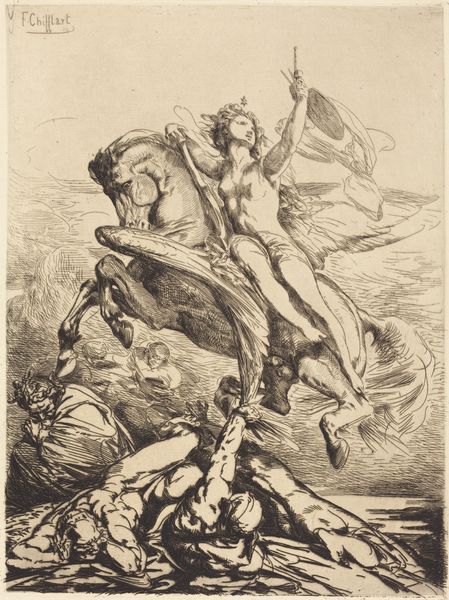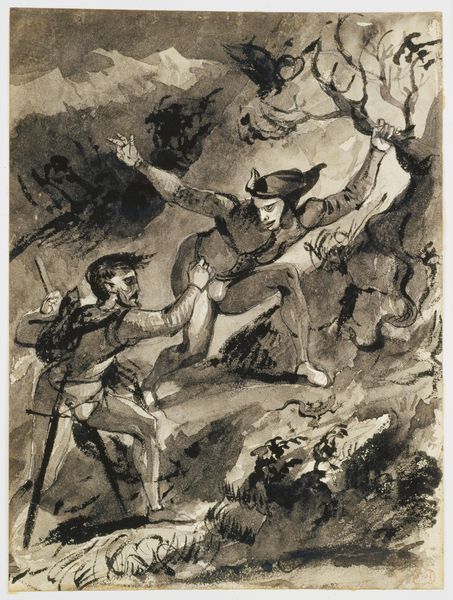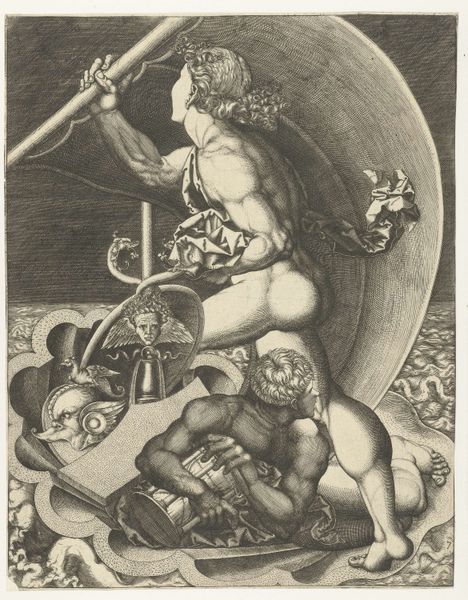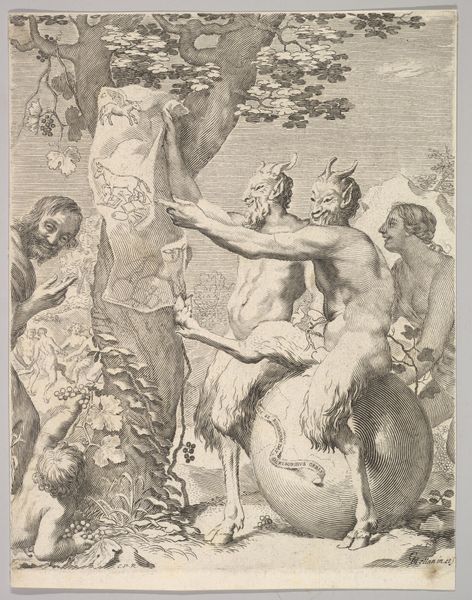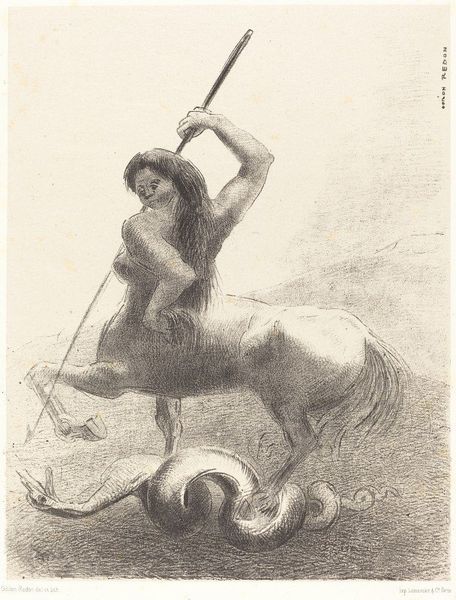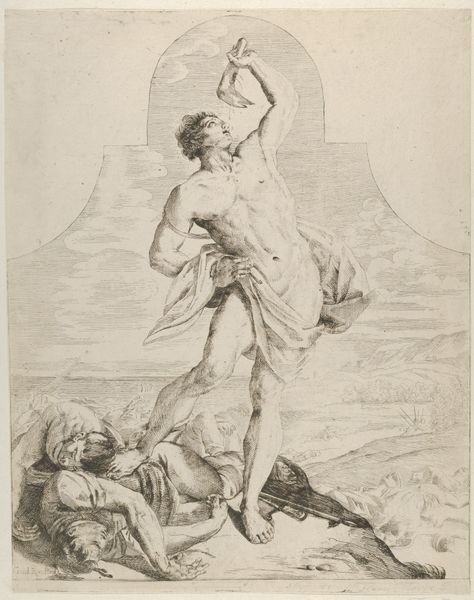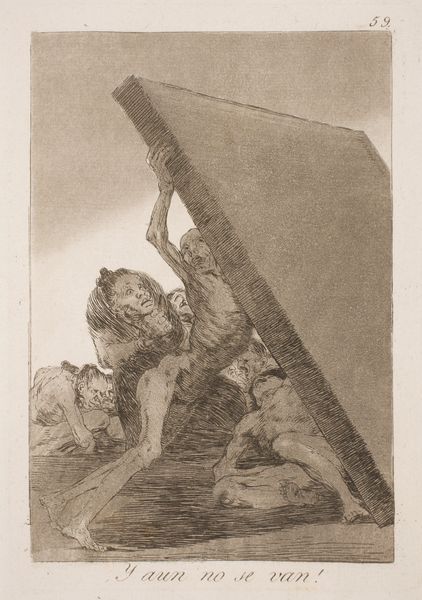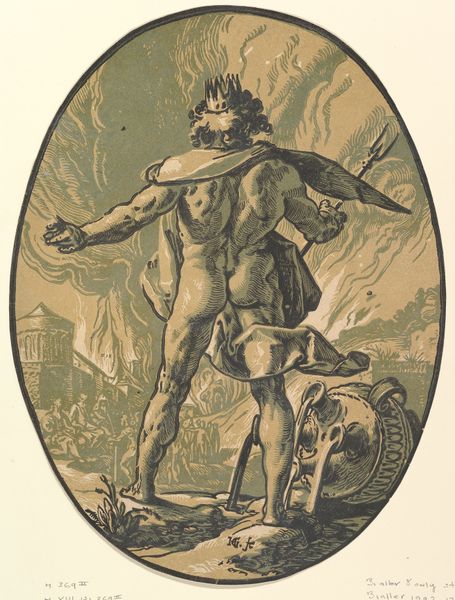
drawing, print, paper, watercolor, ink, chalk, graphite
portrait
drawing
narrative-art
caricature
landscape
caricature
figuration
paper
watercolor
ink
romanticism
chalk
line
graphite
portrait drawing
watercolour illustration
history-painting
academic-art
portrait art
Dimensions: 396 × 343 mm
Copyright: Public Domain
Curator: Alfred Edward Chalon gives us "David and Goliath" from sometime in the 19th century. This artwork is on paper and uses a combination of watercolor, graphite, ink, and chalk, housed right here at the Art Institute of Chicago. Editor: The sepia wash gives this piece an eerie feel. David holding Goliath's head, standing over the giant's corpse, has a theatricality that captures the drama of the moment, a strange but powerful depiction. Curator: Right. Chalon's choice of materials and this specific medium—the layering of ink washes and the delicacy of chalk highlights, emphasizes the scene's gruesome nature, challenging any idealization. This work almost feels like reportage from a battlefield, if somewhat embellished for effect, you could argue that it critiques the glorification of military exploits. Editor: The composition creates a visual hierarchy, emphasizing the contrast between David's youthful form and the slain giant’s bulk. Note the precise, confident line work on David's body compared to the looser rendering of Goliath’s armor and the chaotic background; that serves to accentuate the clarity of victory. Curator: The labor involved in such a detailed drawing is interesting here. Prints, historically, made art accessible and propagated narratives across different social strata. Chalon uses the story to question power, examining both those who wield it and those subjected to it. Is the triumph of David the ultimate result of the mode of making, which enables everyone to "know" the history and the outcome? Editor: Precisely. By stylistically separating and clearly displaying, both literally and figuratively, the “head” of power and the body of power—one as victor, and one as a mass for David’s footstool—David is shown not only overcoming, but usurping that very visual presence and semiotic impact previously enjoyed by Goliath. Curator: Looking at the socio-political context, prints like these served as a vehicle to depict political events as well as impart moral lessons... Editor: What a final thought, Curator! As we conclude our viewing, Chalon's piece brings an innovative, stylistic composition to the historical scene, one where the physical narrative and visual story stand in balance with one another. Curator: A fascinating work which has definitely left us with much to think about today.
Comments
No comments
Be the first to comment and join the conversation on the ultimate creative platform.
